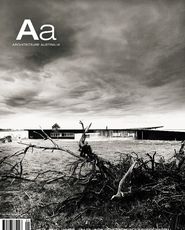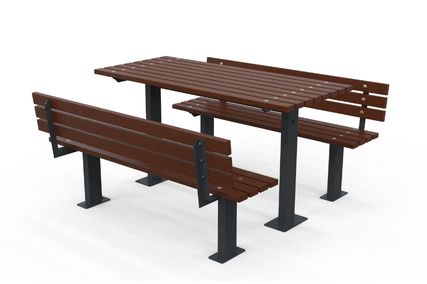HOW DO WE DETERMINE THE ‘BEST’? SHELLEY PENN AND JENNIFER CALZINI CONTEMPLATE THE ISSUES AND THE OUTCOMES OF THE RAIA VIC CHAPTER’S ‘REJUDGING’ OF 75 YEARS OF ARCHITECTURE AWARDS.
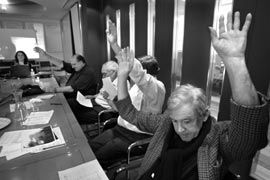
The rejudging process. Photograph John Gollings.
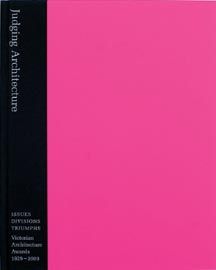
Assorted Laminex covers.
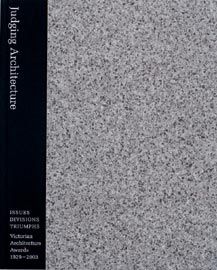
Assorted Laminex covers.
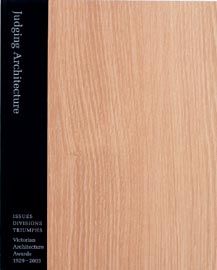
Assorted Laminex covers.
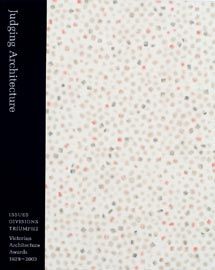
Assorted Laminex covers.
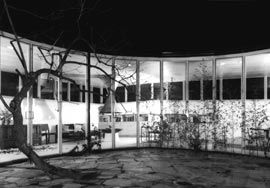
Grounds House and Flats, Roy Grounds, 1953–4. Photograph Leslie R. Hunting (courtesy Latrobe Picture Collection, State Library of Victoria).

Grounds House and Flats, Roy Grounds, rephotographed John Gollings, 2003.
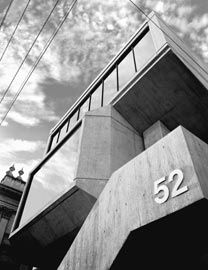
Plumbing Division (GPGEU). Former Plumbers and Gasfitters Union Building, Graeme Gunn, 1970. Photograph Ian McKenzie.
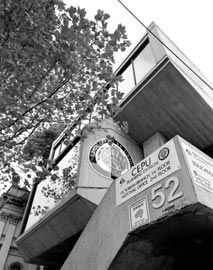
Plumbing Division (GPGEU). Former Plumbers and Gasfitters Union Building, Graeme Gunn, rephotographed John Gollings, 2003.
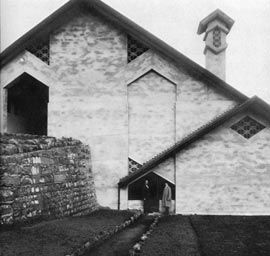
Essendon Municipal Incinerator,Walter Burley Griffin and Eric Nicholls, 1929–30. Photograph from The Architecture of Walter Burley Griffin by Donald Leslie Johnson.
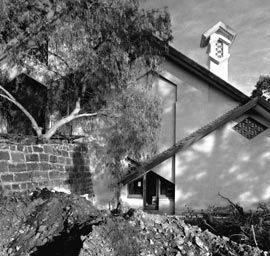
Essendon Municipal Incinerator,Walter Burley Griffin and Eric Nicholls, rephotographed John Gollings, 2003.
JUDGING ARCHITECTURE IS a complex task. There are many questions to consider; there are physical, social, cultural and historical observations to be made; there are discussions to be had in agreeing priorities and reasons for judgments that must be articulated. Judging Architecture, the book, is ambitious, in aiming both to document the rich history of the Victorian Architecture Awards from 1929 to 2003 and to “re-judge” the buildings of the period to arrive at the thirty-six “best”. The content is presented in five diverse parts: an historical overview essay, a collection of comments on the awards process by practitioners and participants, the documentation of the re-judging event, re-photography of the thirty-six buildings, and the “Awards Overview” and “Catalogue”. This proves that judging architecture might be complex but, as put by key contributor Dimity Reed, re-judging architecture is “a brave and imperfect thing”. So, how does the book succeed as a re-evaluation of the past seventy-five years of architecture in Victoria, and as an illumination of the task of judging architecture?
As an historical record and document, the book is excellent. Philip Goad’s essay, a primary component of the book, is engaging and informative, and offers significant insight into our changing values and cultural development. It articulates astute observations – such as the 1970s shift in focus to encompass not only “good architecture” but also what architects thought was “good for architecture”. The essay is supported by the “Awards Overview” and “Awards Catalogue”, which offer small but excellent photographs of the “big” award winners, and a succinct listing of all award winners and the juries who deliberated over them in the seventy-five-year period.
The re-judging, however, is less convincing as a process and less polished as a text.
Questions are raised in the reader’s mind, particularly relating to the guiding principles and assessment criteria that underpinned the process. It is notable that the RAIA Victorian Chapter’s awards process has, in recent years, required juries of four people to consider projects in relation to specific written criteria for each category of building. The jury members may, among themselves, agree to use additional criteria, but minimum terms of reference are laid out for them. Juries are required to nominate the buildings they think meritorious from those entered, and to write a few words as to why these have been chosen. The words are usually for publication/promotional purposes, nonetheless the task of writing about why one building is better than another requires some articulation of values and some reflection on the criteria.
Assuming a similar process would apply to “re-judging” architecture, and allowing for the possibility of additional “in hindsight” criteria, the prospect of a list of Victoria’s thirty-six “Best Buildings” as “re-judged” from the period 1929–2003, is tantalizing. Which buildings would be chosen and why? What would the jury value? Such are the reader’s hopes and expectations, and they are further heightened by the contributors’ stated aims. In her essay, “The New Scrutiny”, Reed claims the intent of the book “was to see how views of architecture change, and to understand something of the roles that knowledge, fashion, politics and professional antagonisms might play in assessing architecture”. This is a worthy objective and it promises fascinating insights, but on this promise the book disappoints.
The reason for this, we believe, is that the process, as related here, did not go beyond the boundaries of what is already established. The jurors selected, the assessment criteria, the range of buildings considered and their physical representation – all appear to perpetuate, rather than to challenge, what is already known.
The selected jurors are a high-profile, well-credentialed group and are well known within Melbourne’s architectural community, most of them being past jurors and award-winners.
However, there is nothing to inform the uninitiated as to who these people are (beyond title) and why they were appointed. Transcripts of the judging forum communicate some of the criteria that seem to have arisen in an ad-hoc manner through debate on particular buildings and we can be sure that jurors were assessing against certain values, but there doesn’t seem to have been any prior or even evolving agreement as to key criteria. It seems to have been selection by consensus, and that seems to have been by default not design. Apart from the lack of key values against which one might assess each building, other “big picture” issues arise: was there any clear definition of the range of buildings that might be considered for inclusion? If so, what was it? Why was a broader range of buildings not seriously contemplated by the jurors? Or was it? There are people out there who are not RAIA members who are designing good buildings, and quite a few excellent buildings which have never been entered for RAIA awards. Allan Powell recognized this and suggested several “unknown” buildings in his personal list. None of these, however, appear to have been really considered during the re-judging process.
The outcome is the “list of thirty-six”, and while we have no great argument with the selected buildings (they are all iconic, significant, architectural landmarks), we note that the list seems conservative and unsurprising. It’s not the buildings that disappoint – in fact they delight – but the process which led to their selection, how it is articulated, and the presentation of these buildings in this volume.
“Re-photography” presents the thirty-six selected buildings in large images as “before” and “after” shots. Original images were chosen, then John Gollings re-shot each building from the same angle, regardless of what that angle revealed or concealed about the building and any changes that have occurred over time. This photography did not play a part in the re-judging process and, in most cases, adds little insight to our understanding of the buildings selected. It is beautiful but ultimately uninformative. One has the sense of a missed opportunity – it would have been provocative to see alternative images of these wonderful buildings and to learn how the buildings have worked and changed over time. Furthermore, not all buildings are designed with the iconic image in mind. Indeed, we’d suggest that all of the thirty-six here listed were designed with a far more sophisticated consciousness of how buildings are inhabited and understood.
It is in the collection of personal comments by practitioners and participants that the book reveals something of the truly complex, personal and social nature of judging architecture. This anecdotal view of the awards process is offered through a series of short essays, and through the transcripts and snapshots from the judging forum. They offer interesting reading, but could the revelations have gone further? We get the sense that more went on than anyone is telling. Who was it that threw a glass of beer over whom at one postawards gathering? Who got into a fight outside the NGV after another awards night? Who loudly swore the whole thing was a “wank” one year but returned to submit project after project and to garner several awards? The images and text are very personal and it’s this aspect that seems to invoke the voyeur and to promise some deeper (or dirtier) insights.
While the process and its documentation fall short in some areas, this book succeeds in revealing something of the culture of award-giving as fostered by the Victorian Chapter of the RAIA. The reflections of changing social values, the re-exposure of some exceptional buildings and the portrayal of human aspiration and imperfection are all good reasons to have a look at Judging Architecture.
SHELLEY PENN AND JENNIFER CALZINI ARE MELBOURNE-BASED ARCHITECTS.

